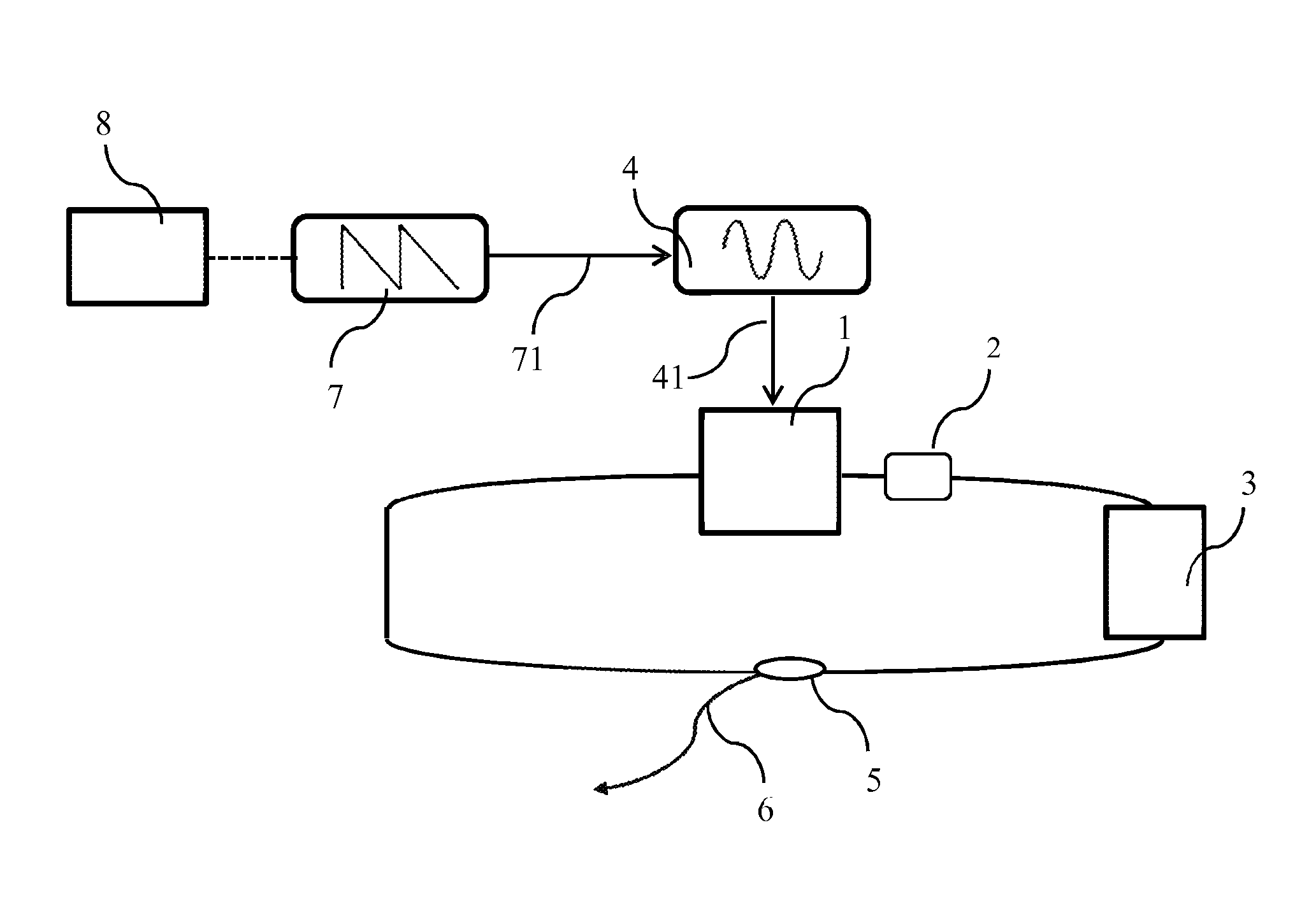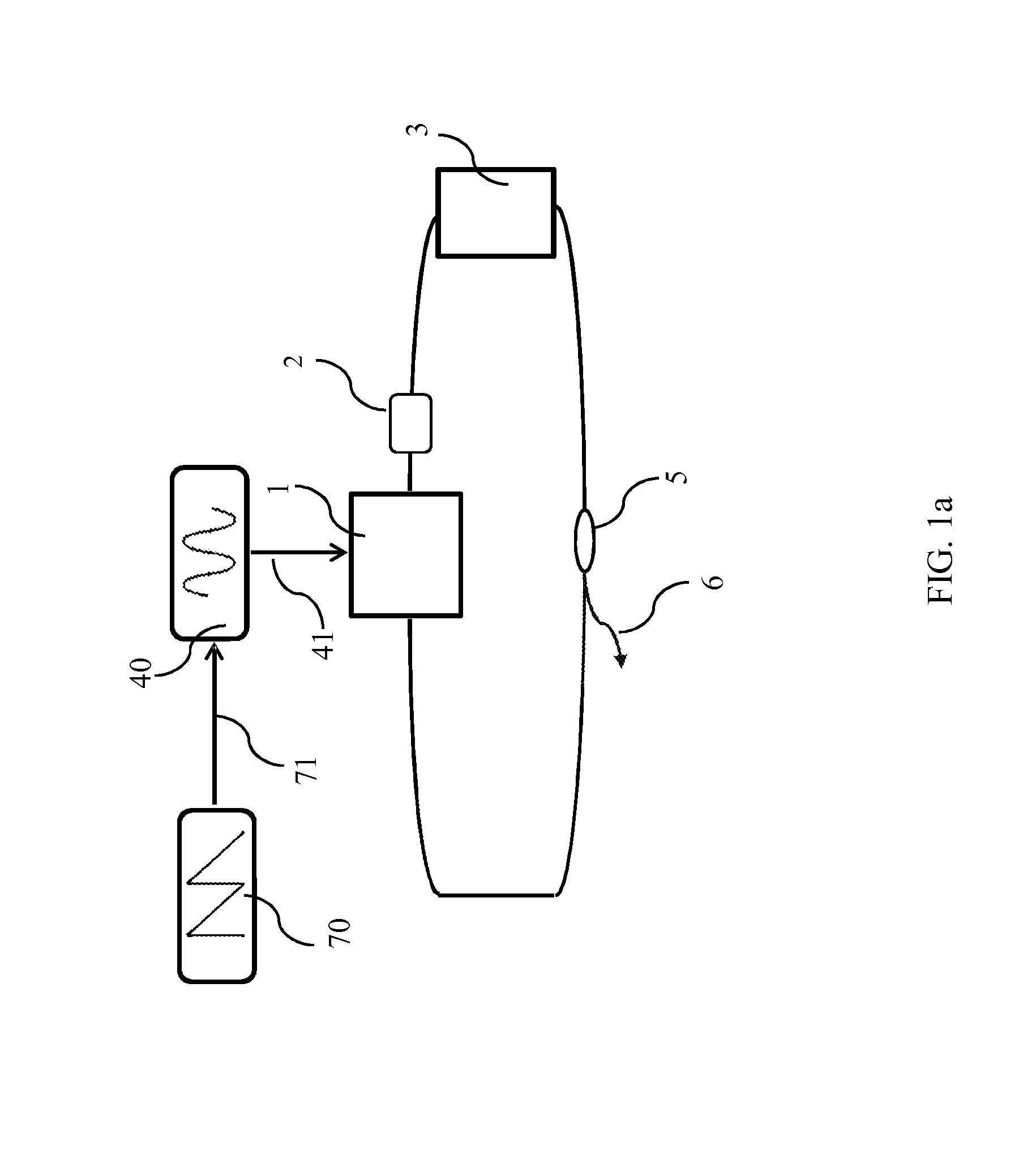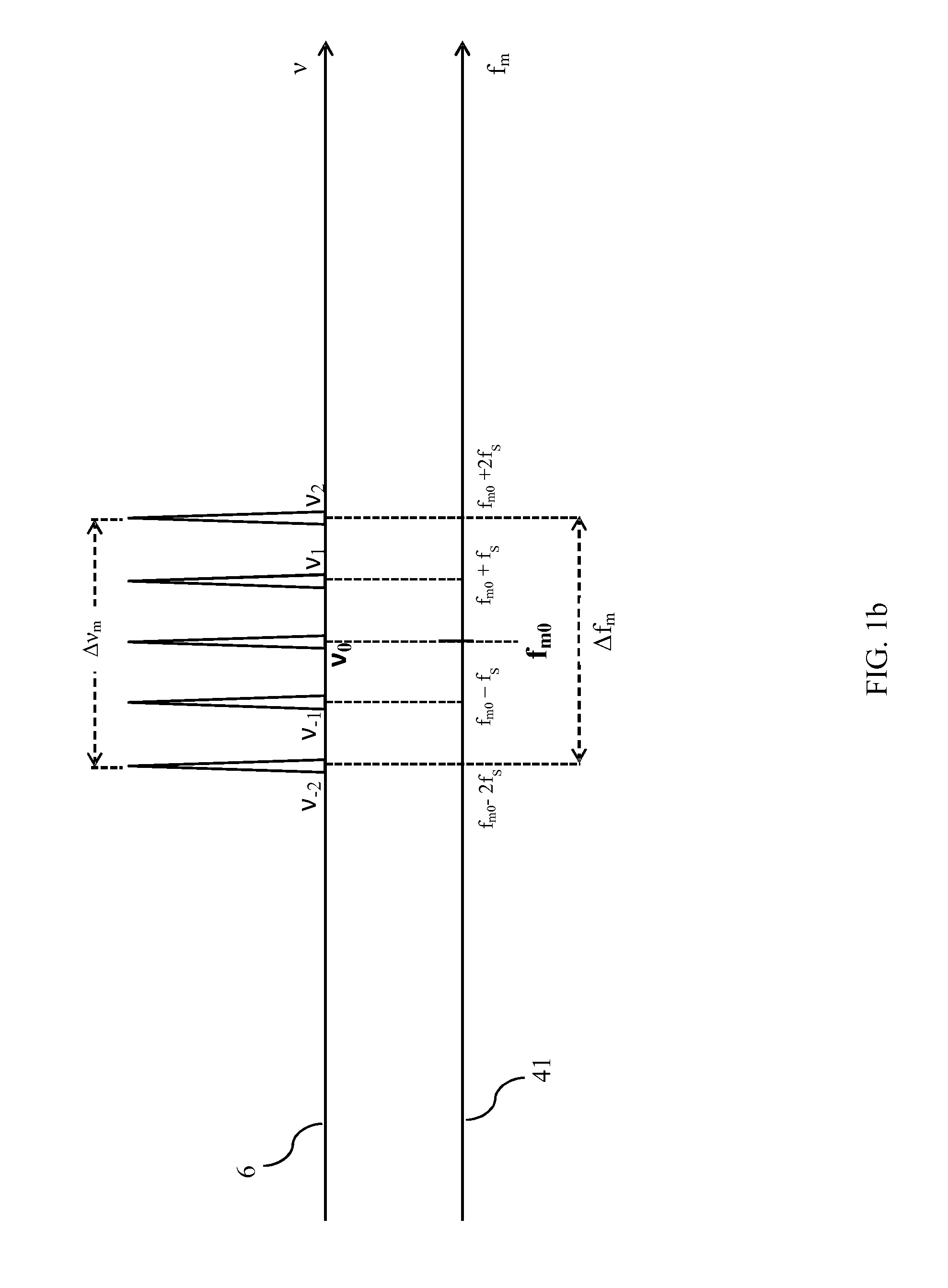Akinetic swept laser apparatus and method for fast sweeping of the same
a technology of kinetic swept laser and swept laser, which is applied in the direction of electrical equipment, laser details, active medium shape and construction, etc., can solve the problems of limited tunability of methods, limited reliability, and complex buffering, and achieves faster sweeping speed and power output. higher
- Summary
- Abstract
- Description
- Claims
- Application Information
AI Technical Summary
Benefits of technology
Problems solved by technology
Method used
Image
Examples
examples
[0071]In continuation, examples of the present invention will be described.
first example
[0072]FIG. 5 illustrates the embodiment of an akinetic swept laser according to the third aspect of the invention. A fibre ring laser configuration is employed, where the functions of both mode-locking mechanism block (nonlinear medium) 1 and optical amplifier 2 are accomplished by a semiconductor optical amplifier (SOA), 1, 2 according to the present invention. The SOA 1, 2 is placed in a ring delimited by fiber optic isolators (optional) 51, which ensure unidirectional lasing, together with dispersion means 3 implemented using a dispersion compensating fiber (DCF), 3a. The RF signal 41 is applied to the SOA 1, 2 via a radio frequency input 80 (bias tee). The output optical emission is drawn out through splitter 5, a single mode coupler of 10 / 90, with 10% extracted out of the cavity. The semiconductor optical amplifier 52 is of similar type of device as the gain medium 1, 2, but of larger dBm power value.
[0073]As a practical implementation, a SOA, 1, 2, type SOA-L-C-14-FCA, BT CIP ...
second example
[0087]In the second example, the operation of the basic ring cavity swept laser, as shown in FIG. 12 will be illustrated with a different dispersion means. This comprises an assembly containing the following elements: an optical circulating device 52 and a chirped fibre Bragg grating (cFBG), 3b. According to FIG. 12, the embodiment uses a semiconductor optical amplifier (SOA) as gain medium 1, 2, modulated by a large frequency deviation VCO 4 driven by large frequency sweeping generator 7. A SOA, 1, 2, is delimited by two fiber optic isolators, 51, to ensure unidirectional lasing. The RF signal 41 is applied to the SOA 1, 2 via a radio frequency input 80 (bias tee). A controller 8 is used to drive the sweeping generator 7. The controller 8 is instructed by three parameters: fR, δf and b.
[0088]As a particular example, a system according to FIG. 12 was assembled, operating at 1060 nm, using a SOA (QPhotonics-1050) with a maximum current 300 mA and a bandwidth larger than 100 nm. A cF...
PUM
 Login to View More
Login to View More Abstract
Description
Claims
Application Information
 Login to View More
Login to View More - R&D
- Intellectual Property
- Life Sciences
- Materials
- Tech Scout
- Unparalleled Data Quality
- Higher Quality Content
- 60% Fewer Hallucinations
Browse by: Latest US Patents, China's latest patents, Technical Efficacy Thesaurus, Application Domain, Technology Topic, Popular Technical Reports.
© 2025 PatSnap. All rights reserved.Legal|Privacy policy|Modern Slavery Act Transparency Statement|Sitemap|About US| Contact US: help@patsnap.com



